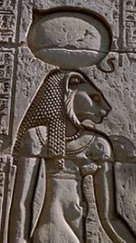 In his Worlds in Collision (New York: Macmillan, 1950), Immanuel Velikovsky argued that Venus emerged as a red-hot comet from Jupiter and passed Earth every 52 years, causing the Bronze Age catastrophes, before settling into its current orbit. His claim set off a controversy in which his theory was rejected and stigmatized. But over the years, new findings have changed the picture. Here are eight new reasons to accept a Revised Venus Theory.
In his Worlds in Collision (New York: Macmillan, 1950), Immanuel Velikovsky argued that Venus emerged as a red-hot comet from Jupiter and passed Earth every 52 years, causing the Bronze Age catastrophes, before settling into its current orbit. His claim set off a controversy in which his theory was rejected and stigmatized. But over the years, new findings have changed the picture. Here are eight new reasons to accept a Revised Venus Theory.
- The Revised Venus Theory’s new explanation that Venus was pulled from the outer solar system by Jupiter’s gravity, heated up from tidal friction, and gained a cometary tail seems far more persuasive than the notion that it fissioned off of Jupiter itself.
- We now have two newly interpreted, powerfully descriptive myths: 1) the Metis (Venus) myth in which, turned into a fly, she flew into Zeus’ mouth and gave birth to Athena, who (in the Athena myth) emerged from his head; and 2) the sequential version of the Chinese Archer Yi myth, which neatly records a ten-day inversion of Earth, even to the point of a comet’s tail turning each day opposite from the changing direction of the Sun because of the solar wind. We can see with Archer Yi that the initial interpretation required knowing that there was a sequential version of the myth, being aware of Venus’ vermilion, double/curved tail (Yi’s bow), and knowing about inversions from Worlds in Collision. So it wasn’t simple. But now that the interpretation is available, any intelligent ten-year old, as well as any scientific critic of Velikovsky, can understand it. And understand the Metis and Athena myths, too. Once they are correctly interpreted, these myths are easy to understand. The wholesale dismissal of ancient myths as sources of scientific insight is clearly indefensible. Many myths are fanciful. Some contain important truths that no reasonable person can ignore.
- There is a simple explanation of the slow retrograde (but swiftly changing to prograde) rotation of Venus, an outstanding anomaly of planetary science: it is the result of tidal locking to Jupiter. This is also a fitting explanation of the superrotation of Venus’ atmosphere.
- Jupiter’s gravitational pull stretched Venus into an ovoid, as depicted in ancient iconography. This in turn opens our eyes to many instances of ancient Venus-related ovals, as in the above image of Egypt’s Venus goddess Sekhmet (obviously, not every oval referred to Venus; we must consider the context).
- Many new instances of iconography, Venus sites, and effigies fill out the framework of the Venus theory; and telling linguistic matches add to the picture. The archaic Greeks called Venus A Fena (eventually Athena–the Phoenician Lady arising in the east) and Bos Eidon (Poseidon–the bull of heaven, as in the Ancient Near East), for example.
- We now have a better date (shortly before 2500 BC) for the first approach of Venus, one that matches evidence from Egypt (the Great Sphinx, Hathor with ovoid Venus in her horns alongside Menkaure) and the great reconstruction of Stonehenge.
- We know the approximate dates of the four inversions of Earth during close approaches of Venus: 2200, 1628 (less certain), 1210, and 820 (least certain; an alternate date is 687 BC, but by this time Venus had been tamed by encounters with Mars that then sent Mars careening toward Earth in 687.). This permits us to interpret much better the epochs and events of the Bronze Age catastrophes. We can also see why the Phoenix (linguistically related to Venus) was reborn roughly every 500 years in myth.
- We now have two new theories that stem from the Venus and Reversing Earth theories. The Outer Solar System Origin of the Terrestrial Planets (OSSO) generalizes the Venus theory, adding much corroborative evidence. OSSO explains the origin of the Pacific Basin as the result of the separation of Mars from Earth by Jupiter’s gravity upon the passage of the combined planet Terramars into the inner solar system. In turn, the Martian Theory of Mass Extinctions (MTME) links tidal destruction caused by planetary approaches with rapid inversion from the Theory of the Reversing Earth to help explain the devastation on Earth as well as the remarkable evidence of disruption on the surface of Mars. These theories provide mutual support and can be considered components of a general tidal theory of the terrestrial planets that outperforms existing ad hoc hypotheses, assumption-bound mathematical modeling, and in situ uniformitarianism. These theories also lend themselves to investigation and testing.
If they wish to retain credibility, critics who keep rejecting the Venus theory need to stop focusing on the inadequacies of the original theory of 1950 and instead try to argue against the new, much more robust Revised Venus Theory. We can wish them luck!
*****
Kenneth J. Dillon is a historical and scientific researcher. See the biosketch at About Us. The Revised Venus Theory plays a role in his novel of discovery science Rosemarie (Washington DC: Scientia Press, 2021).
